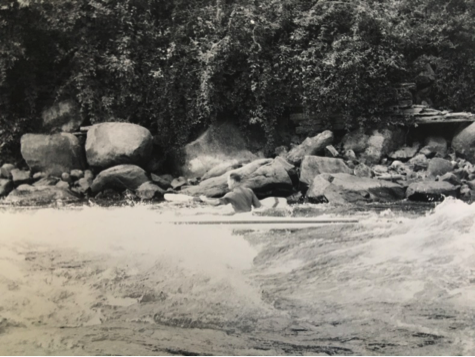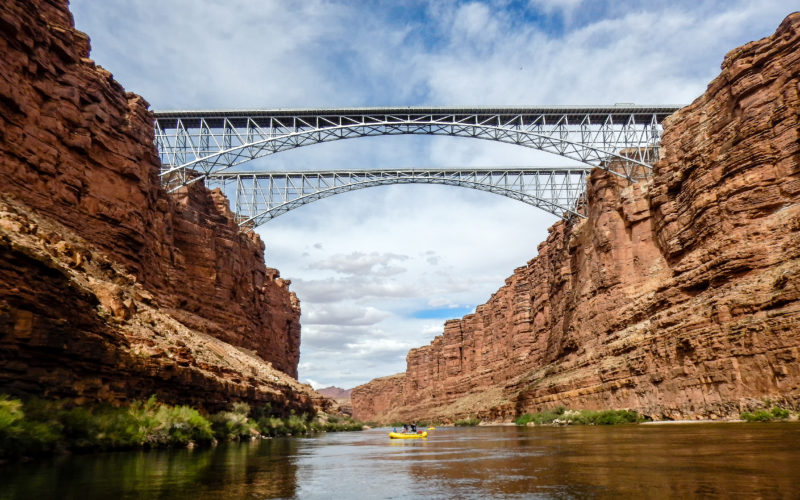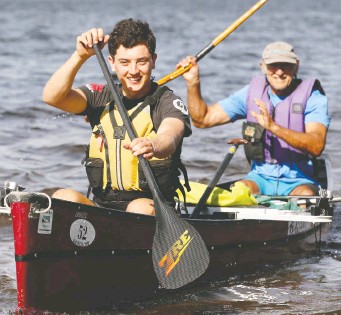
By Jacques Bourbeau
Pristine waters coursing through river beds nestled in the coarse rock of the Canadian Shield.
The thunderous sound of rushing water, foaming and swirling.
The sun reflecting off the river, throwing off diamond-like glitter.
Drifting downriver, watching a giant blue heron lazily take flight.
The thrill and exhilaration of paddling a canoe or kayak through rapids, plunging through pillowy mounds of water.
This is the world of whitewater paddlers. A world that thousands of people have been introduced to, thanks to the pioneering efforts of Hermann and Christa Kerckhoff.

Born in Germany, Hermann and Christa emigrated to Canada in 1960, where their passion for whitewater was born and nurtured. In 1964, the couple joined the Ontario Voyageur Kayak club, and they quickly grew to love the sport. So much so that in 1972, Hermann returned to Germany to compete in the Munich Olympics as a slalom canoeist. But their contributions to this sport were to become much more than just their individual accomplishments.
They realized there was a big obstacle to getting more people on the river. There was no place people could go and safely learn the sport. Learning how to paddle was very much an ad hoc experience. So Christa and Hermann’s solution was to create a paddling school, where both novices and expert paddlers could learn the basics or refine their skills. And in 1972, they decided a small section of the Madawaska River would be the ideal location. They fashioned the Madawaska Kanu Centre (MKC) after the ski school model in Europe, where students are divided into different groups based on skill level, and offered a week’s instruction. Tapping into their network of racing friends, they brought World and Olympic champions over from Europe, and collectively designed a training program that would give people the skills they would need to successfully navigate a set of rapids.
One innovation: Setting a course of slalom gates. Not for racing. But as teaching tools. The gates a substitute for rocks, teaching people how to successfully pick their way through obstacles in a river. The emphasis was, and continues to this day, on technical paddling. Teaching students how to control their boat, understand the dynamics of a river, and learn how to use the water efficiently so it does most of the work, not the paddler. A curriculum that has proven so successful that you can often pick out a paddler who learned their skills on the Madawaska River. However, all work and no play does not make for a positive learning experience. So the Kerckhoff’s made sure their courses included great food, pleasant accommodations, the camaraderie of new-found ‘river’ friends and a stunning outdoor setting, resulting in a Centre that offers an environment where learning and fun are offered in equal measure.
But their innovative spirit did not stop here. One of the dilemmas they faced as they launched MKC was that Canadian rivers run fast and furious in the spring, but their force diminishes in the dry days of summer. Fortunately, the section of the Madawaska River where their new school was located is below a dam operated by Ontario Hydro.
So Christa and Hermann asked a simple question. How much water does the dam need to release over a 7 day period. And is there a way to time the release of that water so that paddlers can play on rapids during the day, and at night the levels drop. The answers had to come from a variety of government agencies. Negotiating with Power authorities and the Ministry of Natural Resources, the Kerckhoff’s eventually succeeded in creating a unique water management system, that guaranteed consistent water releases so that paddlers could practise their skills on the Madawaska River.
MKC is known to this day for its emphasis on technical paddling, learning how to use the water efficiently and creating a very supportive learning environment. We’ve been told you can pick out a paddler who has learned at Madawaska Kanu Centre. Over the years, MKC became a well-known part of the international whitewater landscape.
Hosting many Canadian championships on its slalom course, and, in 1984, the Pan Am games came to this Centre nestled in the heart of the picturesque Madawaska Valley. The Kerckhoff’s pioneering spirit did not stop with the founding of MKC. It found other outlets. In 1970, Hermann and Christa joined a group of 49 kayakers who ran the first descent of the Grand Canyon. Closer to home, Hermann and his daughter Claudia were the first to kayak the powerful rapids on the Ottawa River. A voyage that set the stage for the next chapter of the Kerckhoff’s contributions to the whitewater community. Realizing the untapped potential of the mighty Ottawa River, they saw an opportunity to create a thriving recreational boating experience. In 1981, they started OWL Rafting, inviting tourists to come and safely experience the thrills of whitewater on this world-renowned River.
But their contributions to paddling on the Ottawa River included a distinctly non-commercial aspect. They purchased property at several points along the Ottawa River, and made access to them freely available to all paddlers. As much of the shoreline is privately owned, the Kerckhoff’s believed in the importance of ensuring river access to the entire paddling community.
Lives well lived leave a powerful legacy. From their personal paddling accomplishments, to their efforts to teach people the skills they need to enjoy years of safely navigating powerful rapids, and their commitment to ensuring everyone has access to some of Canada’s most majestic and powerful rivers, the Kerckhoff’s can look back proudly at their contributions to the whitewater community.
As well, there is a more personal legacy. Their daughter Claudia followed in Hermann’s footsteps, competing at the international level, and winning ten Canadian women’s championships. Claudia, with her husband Dirk, took over operation of both OWL and MKC in the 1980’s. And now, a third generation, Claudia and Dirk’s 2 daughters, Stefani and Katrina, are poised to assume roles leading their 3-generation whitewater businesses in the decades ahead.

